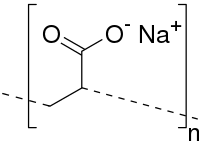
Photo from wikipedia
BACKGROUND The skin is one of the most essential organs of the body that plays a vital role. Protecting the skin from damage is one of the most critical challenges.… Click to show full abstract
BACKGROUND The skin is one of the most essential organs of the body that plays a vital role. Protecting the skin from damage is one of the most critical challenges. Therefore, the ideal wound dressing that has antibacterial, mechanical, biodegradable, and non-toxic properties can protect the skin against injury and accelerate and heal the wound. OBJECTIVE in this study, a nano-wound dressing is designed for the first time. This work is aimed to optimize and act as a dressing to speed up the wound healing process. METHODS Graphene Oxide (GO) was produced by the hummer method. In the next step, GO-copper (Cu) nanohybrid was prepared, then GO-Cu -Curcumin (Cur) nanohybrid was synthesized. Using the electrospinning method, polyvinyl alcohol (PVA)/ GO-Cu -Cur were spun, and finally, related analyzes were performed to investigate the properties and synthesized chemicals. RESULTS The results showed that the nanocomposite was synthesized correctly and the diameter of the nanofibers was 328 nm. The use of PVA improved the mechanical properties. In addition, the wound dressing had biodegradable, antimicrobial, and non-toxic properties. The results of the scratch test and animal model showed that this nanocomposite accelerated wound healing and after 14 days showed 92.25% wound healing. CONCLUSION The synthesized nanocomposite has the individual properties and characteristics of an ideal wound dressing and replaces traditional methods for wound healing.
Journal Title: Current drug delivery
Year Published: 2022
Link to full text (if available)
Share on Social Media: Sign Up to like & get
recommendations!